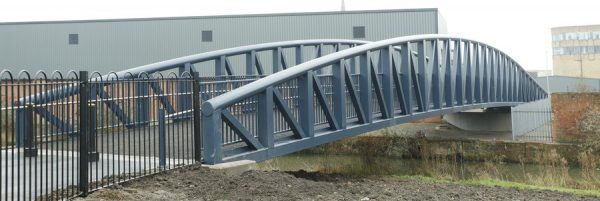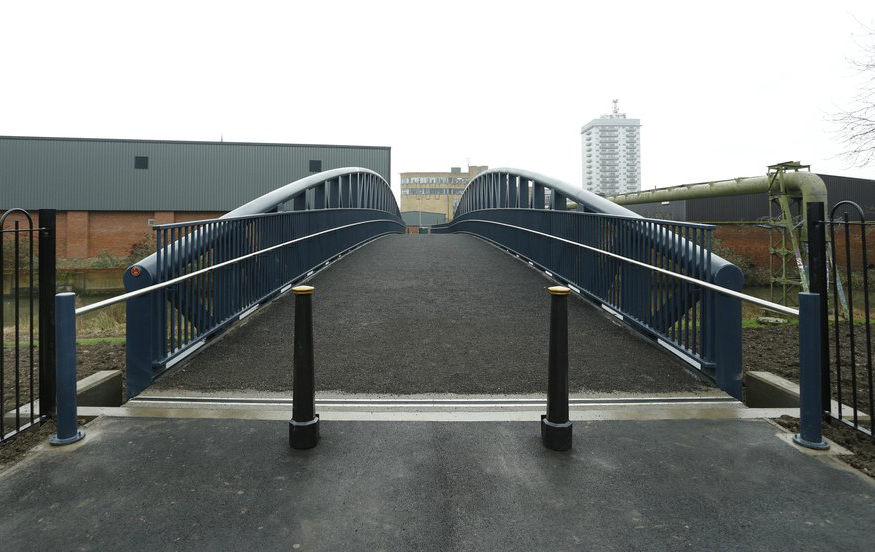One of the many benefits of mastic asphalt is its suitability for use on roofs, decks or paved areas which are subject to traffic. Used extensively as a long-life wearing surface in urban projects, where durability is paramount, modified bituminous materials such as mastic asphalt can bring real benefits to roof, deck, road and pathway construction.
Slip and skid resistance can be provided in the wearing course of mastic asphalt by sand rubbing, surface crimping or the application of high polished stone value pre-coated chippings. For local authorities and public pathway specifiers, this added functionality further enhances the material’s suitability for public areas – and reduces the potential for any slips and trips.
Another major advantage with mastic asphalt is that it can be laid at speed, reducing the project costs significantly. It also cools very rapidly, allowing foot traffic within two to three hours, depending upon ambient temperature.
Offering exceptional durability, waterproofing and skid resistance, mastic asphalt has been used across the globe on all manner of paving applications for more than a century – from surfacing the pavements around Tower Bridge in London to hundreds of bridges and car parks and one of the biggest civil engineering projects in the world – where it was used as a surface material on the 31 mile long Hong Kong bridge between Hong Kong and Macau. For this application, it was mechanically laid at a staggering rate of 6000m2 per day.
Closer to home, a project was carried out by Mastic Asphalt Council (MAC) contractor member BriggsAmasco in Leicester. BriggsAmasco was appointed by Danaher & Walsh, on behalf of Leicester City Council, to provide a proven, reliable, watertight surface for Charter Street footbridge, a new 12-metre bridge linking a 12th century park – Abbey Park – to Charter Street in the city centre.
The £1.2 million five metre-wide bridge was part of the city’s ‘Connecting Leicester’ programme designed to create links between disparate city centre areas by building public open spaces and safe pedestrian and cycle routes. The bridge crosses the Grand Union Canal from the Leicester Community Sports Arena, home of the Leicester Riders basketball team, to Abbey Park.
Each year, the city hosts a huge bonfire display in Abbey Park which attracts up to 30,000 people, hence the need for a convenient pedestrian access to-and-from the city centre. The structure was designed to be elegant in appearance with a steel Pratt truss design producing an aesthetically pleasing shape and seamlessly blending into the surrounding environment.
The traditional nature of mastic asphalt and its suitability for heritage projects was a consideration for this project, as the bridge was designed to ensure it is unobtrusive on the Grade II* Registered park and garden, which opened to the public in 1882. The new pathways from the bridge into Abbey Park were designed so that they link into the existing axial arrangement designed by the celebrated landscape architect William Barron in 1879.
 The bridge’s proportions created a number of technical challenges during design and construction. The main superstructure was delivered to site via Abbey Park in six sections before on-site fabrication took place. It was then lifted into place in a precision operation with little margin for error.
The bridge’s proportions created a number of technical challenges during design and construction. The main superstructure was delivered to site via Abbey Park in six sections before on-site fabrication took place. It was then lifted into place in a precision operation with little margin for error.
Due to project delays, the BriggsAmasco installation team had just four days to complete the application of mastic asphalt to the deck to ensure the bridge’s readiness for its official opening by the Mayor on the day of the city’s bonfire night extravaganza.
The diligence and skill shown by BriggsAmasco’s installation teams were crucial to the project’s completion to the agreed four-day timeframe and an extremely high specification. Installers worked long hours, out-of-hours to ensure the bridge was ready for its official opening. The rapid application of mastic asphalt and its quick drying properties meant the structure’s surface was in position for the thousands of visitors travelling safely to-and-from the bonfire night event.
Mastic asphalt is without question the toughest and most durable waterproof membrane available to architects, building owners and other key specifiers. The durability of mastic asphalt was crucial for this project as the bridge was used by 47,000 pedestrians and 6,400 cyclists during the first six months of its opening.
Mastic asphalt is so durable over long periods that it is considered by construction professionals to have little or minimal impact on the environment. At the end of its useful life, mastic asphalt is 100% recyclable or can be used in mastic asphalt screeds, etc., making it the ideal environmentally friendly option.
Mastic asphalt is carbon neutral and over 10 years ago the mastic asphalt sector became the first industry in the world to achieve the CarbonZero standard. It reduces carbon emissions and its seamless nature means it can be easily spot repaired, eliminating the need for costly wholesale replacement. The flowing characteristics of mastic asphalt make it easy for installing contractors to tackle surfaces which are complex, stepped or with multiple protrusions.
This article featured within the August 2021 edition of RCi Magazine – click here to view the article.

